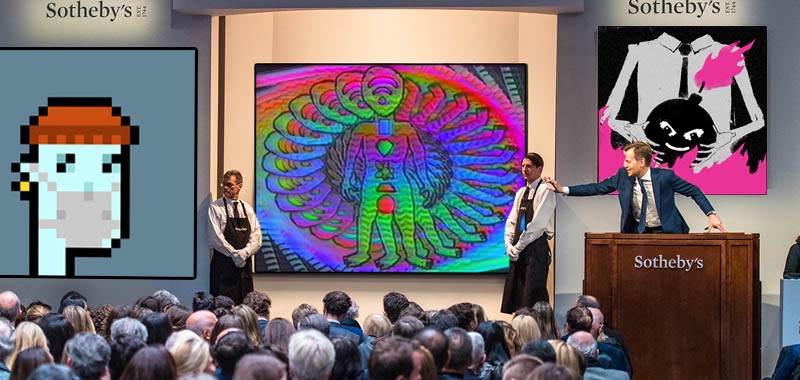
You’ve probably heard the acronym N.F.T. before, but if you don’t know what it is, what it means or why it’s important to the art world, you’re not alone.
NFTs as art
There’s an exciting new digital medium being used in art—NFTs. Even though they’re still not commonplace, NFTs are becoming an important part of any serious art collection. Similar to acquiring studies, drawings and/or limited prints, having NFTs in your collection can add depth and context to the other works. And an added advantage to collecting this new medium is the ability to acquire works by artists otherwise might have been inaccessible.
NFTs can also provide a unique way to view art, as well as insight into an artist’s process. NFTs can even be used to create a more dynamic experience for a viewer. More than just a still image, NFTs have the ability to display motion, like an animated .gif, and/or provide additional materials along with the primary work, such as process videos, an opportunity to Zoom with the artist or supplementary downloads.
In some cases, owning an NFT by an artist can be like being in a club. Once you’ve bought one NFT from an artist or gallery, you might have access to VIP events and/or receive future “airdrops” from that artist or gallery. An airdrop is when the artist or gallery sends you a new NFT—often related to the one you already own—as a gift. These can be collector’s items in their own right and are usually only available to a limited number of people.
Okay, but what is an NFT, really?
An NFT is a non-fungible token. In other words, it’s a digital asset that can’t be replaced by another identical asset. Each NFT is unique, and this uniqueness is one of the things that makes them valuable and an excellent medium for artists.
Unlike traditional art, NFT art is registered and stored on a “blockchain,” or a digital public, decentralized, distributed ledger. This means that an indisputable record is kept of every transaction.
NFTs are still being adopted by artists and collectors alike, but there are already myriad ways to get your hands on one. The most popular way is through online marketplaces like OpenSea. These work like any other online marketplace; you can browse artworks and purchase through their site. The catch is that in most cases, you’ll need to have some cryptocurrency in your digital wallet (like Metamask) since most NFTs are not sold for fiat.
Adding NFTs to Your Collection
If you’re thinking about adding NFTs to your art collection (which I hope you will, eventually), there are a few things to keep in mind. Much like in the traditional art world, consider the type of art and artist you’re interested in. Look for NFTs that reflect those interests. Then think about what features are important to you—are you looking for aesthetics or motion, are you interested in works that have a great story, or do you want the work to serve a dual purpose as a kind of club pass? Or all of the above?
Any way you approach them, I suggest having fun with it. I always keep an eye out for NFTs that put a smile on my face.
I’m always happy to chat art and/or NFTs—please holler if you have questions or would like some help getting started with collecting NFT art! 😊
And if you’re interested in what Western Gallery is doing in the NFT space, we just released our first limited series of 100 GRACKLEZ—a collaboration with Impermanent Collection artist Christy Stallop. Check them out!

